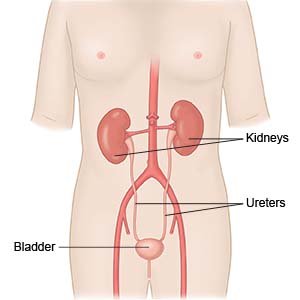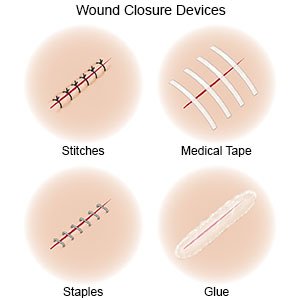Percutaneous Nephrolithotomy
Medically reviewed by Drugs.com. Last updated on Aug 4, 2025.
Percutaneous nephrolithotomy is surgery to remove kidney stones.
 |
WHILE YOU ARE HERE:
Before your surgery:
- Informed consent is a legal document that explains the tests, treatments, or procedures that you may need. Informed consent means you understand what will be done and can make decisions about what you want. You give your permission when you sign the consent form. You can have someone sign this form for you if you are not able to sign it. You have the right to understand your medical care in words you know. Before you sign the consent form, understand the risks and benefits of what will be done. Make sure all your questions are answered.
- An IV will be placed into a vein. You may be given liquids or medicine through the IV.
- Antibiotics may be given to help prevent an infection caused by bacteria. Tell your surgeon if you had an allergic reaction to antibiotics.
- An enema may be needed before your surgery. This is liquid put into your rectum to help empty your bowel.
- General anesthesia will keep you asleep and free from pain during surgery. You may get anesthesia through your IV. You may breathe it in through a mask or a tube placed down your throat. The tube may cause you to have a sore throat when you wake up.
- A Foley catheter is a tube put into your bladder to drain urine into a bag. Healthcare providers will remove the catheter as soon as possible to help prevent infection.
During your surgery:
- An incision will be made in your back. A nephroscope will be put through the incision and into your kidney near the stone. The nephroscope is a long tube with a magnifying glass and a light on the end. Healthcare providers may use x-rays or an ultrasound to help guide the scope.
- The nephroscope and other tools will be used to gently remove the stone. A machine such as a lithotriptor or an ultrasound may be used to break the stones into smaller pieces. The stone will be sent to the lab for tests.
- The incision will be closed with stitches or surgical tape.

Related medications
After your surgery:
You will be taken to a room to rest until you are fully awake. Healthcare providers will monitor you closely for any problems. Do not get out of bed until your healthcare provider says it is okay. When your healthcare provider sees that you are okay, you will be taken to your hospital room. Your incision will be covered by a bandage. This bandage keeps the area clean and dry to help prevent infection. It is normal for urine to leak out of the incision for a few days after surgery. A healthcare provider may remove the dressing soon after surgery to check the incision.
- You will be helped to walk around after surgery. Movement will help prevent blood clots. You may also be given exercises to do in bed. Do not get out of bed on your own until your healthcare provider says you can. Talk to healthcare providers before you get up the first time. They may need to help you stand up safely. When you are able to get up on your own, sit or lie down right away if you feel weak or dizzy. Then press the call light button to let healthcare providers know you need help.
- Intake and output of liquids may need to be tracked. Your healthcare providers may need to track the amount of liquid you are getting. They may also need to know how much you are urinating. Healthcare providers may need to strain your urine to check for stones. Do not flush your urine down the toilet unless healthcare providers say it is okay.
- Medicines may be given to prevent or treat pain, nausea, or an infection caused by bacteria.
- A ureteral stent is a small tube that is placed inside your ureter. The ureters take urine from your kidneys to your bladder. Your stent may come through your skin and be connected to a urine collection bag. The stent helps urine and pieces of kidney stone pass out of your body.
RISKS:
You may get an infection or bleed more than expected. You could have trouble breathing. Organs such as the liver, lungs, and spleen could be damaged during surgery. Scars may form where the stone was removed. Healthcare providers may not be able to remove your kidney stone, and you may need another surgery. You may develop a life-threatening blood clot.
CARE AGREEMENT:
You have the right to help plan your care. Learn about your health condition and how it may be treated. Discuss treatment options with your healthcare providers to decide what care you want to receive. You always have the right to refuse treatment.© Copyright Merative 2025 Information is for End User's use only and may not be sold, redistributed or otherwise used for commercial purposes.
The above information is an educational aid only. It is not intended as medical advice for individual conditions or treatments. Talk to your doctor, nurse or pharmacist before following any medical regimen to see if it is safe and effective for you.
Further information
Always consult your healthcare provider to ensure the information displayed on this page applies to your personal circumstances.
